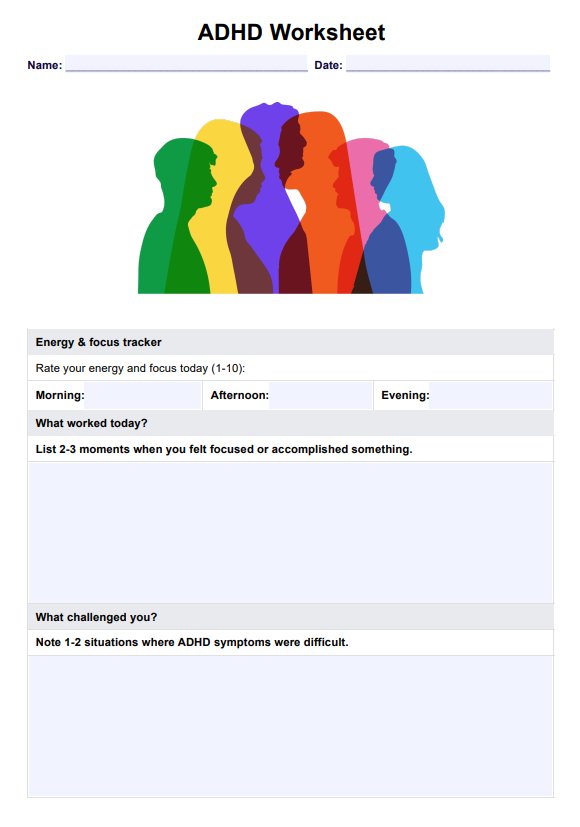An ADHD Worksheet is a resource designed to help individuals with ADHD manage their symptoms, stay organized, and improve their daily lives.

ADHD Worksheets
Download free printable ADHD Worksheets in PDF format. Use our ADHD Worksheets to help clients improve focus, attention, and organization.
ADHD Worksheets Template
Commonly asked questions
"4 F's" of ADHD refer to Fight, Flight, Freeze, and Fib, which describe common behavioral responses to stress or overstimulation in individuals with ADHD. Fight involves impulsive or aggressive reactions; Flight refers to avoidance behaviors; Freeze describes moments of inaction or zoning out; and Fib highlights the tendency to fabricate or exaggerate as a coping mechanism for memory gaps or impulsivity.
Lifestyle changes that can help manage ADHD include maintaining a consistent routine, incorporating regular physical exercise, eating a balanced diet, and ensuring adequate sleep. Mindfulness practices, such as meditation and limiting screen time, can also improve focus and reduce impulsivity. Additionally, breaking tasks into smaller steps and using organizational tools like planners can support executive functioning.
EHR and practice management software
Get started for free
*No credit card required
Free
$0/usd
Unlimited clients
Telehealth
1GB of storage
Client portal text
Automated billing and online payments











